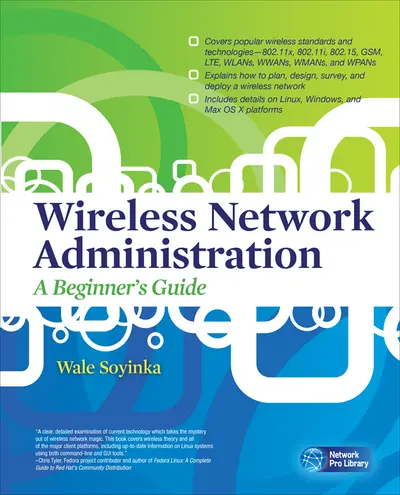My Account Details

ISBN10: 0071639217 | ISBN13: 9780071639217

Step 1 . Download Adobe Digital Editions to your PC or Mac desktop/laptop.
Step 2. Register and authorize your Adobe ID (optional). To access your eBook on multiple devices, first create an Adobe ID at account.adobe.com. Then, open Adobe Digital Editions, go to the Help menu, and select "Authorize Computer" to link your Adobe ID.
Step 3. Open Your eBook. Use Adobe Digital Editions to open the file. If the eBook doesn’t open, contact customer service for assistance.
Publisher's Note: Products purchased from Third Party sellers are not guaranteed by the publisher for quality, authenticity, or access to any online entitlements included with the product. Learn the essentials of wireless networking Configure, manage, and secure wireless networks using the step-by-step details in this practical resource. Wireless Network Administration: A Beginner's Guide shows you how to work with the latest wireless networking standards, including the 802.11x family, on Windows, Mac, and Linux platforms. The book covers wireless network planning, design, hardware, services, protocols, device configuration, security, troubleshooting, and more. This hands-on guide will get you started administering wireless networks in no time. Get details on regulatory and technical organizations Learn about different wireless standards and the basics of RF technologies Understand and determine client-side hardware requirements, including chipsets and various wireless interfaces Select infrastructure-side wireless hardware, such as antennas, wireless access points (WAPs), residential gateways, switches/controllers, routers, and bridges Learn about WLANs, WWANs, WMANs, and WPANs Work with standard wireless network protocols--TCP/IP (IPv4 and IPv6) Understand DNS, DHCP, and other supporting infrastructure services Secure wireless networks using cryptography Configure infrastructure devices, including a wireless access point device and wireless network switches and controllers Configure and manage wireless Microsoft Windows, Mac OS X, and Linux clients Plan, design, survey, deploy, and troubleshoot your wireless network
Need support? We're here to help - Get real-world support and resources every step of the way.